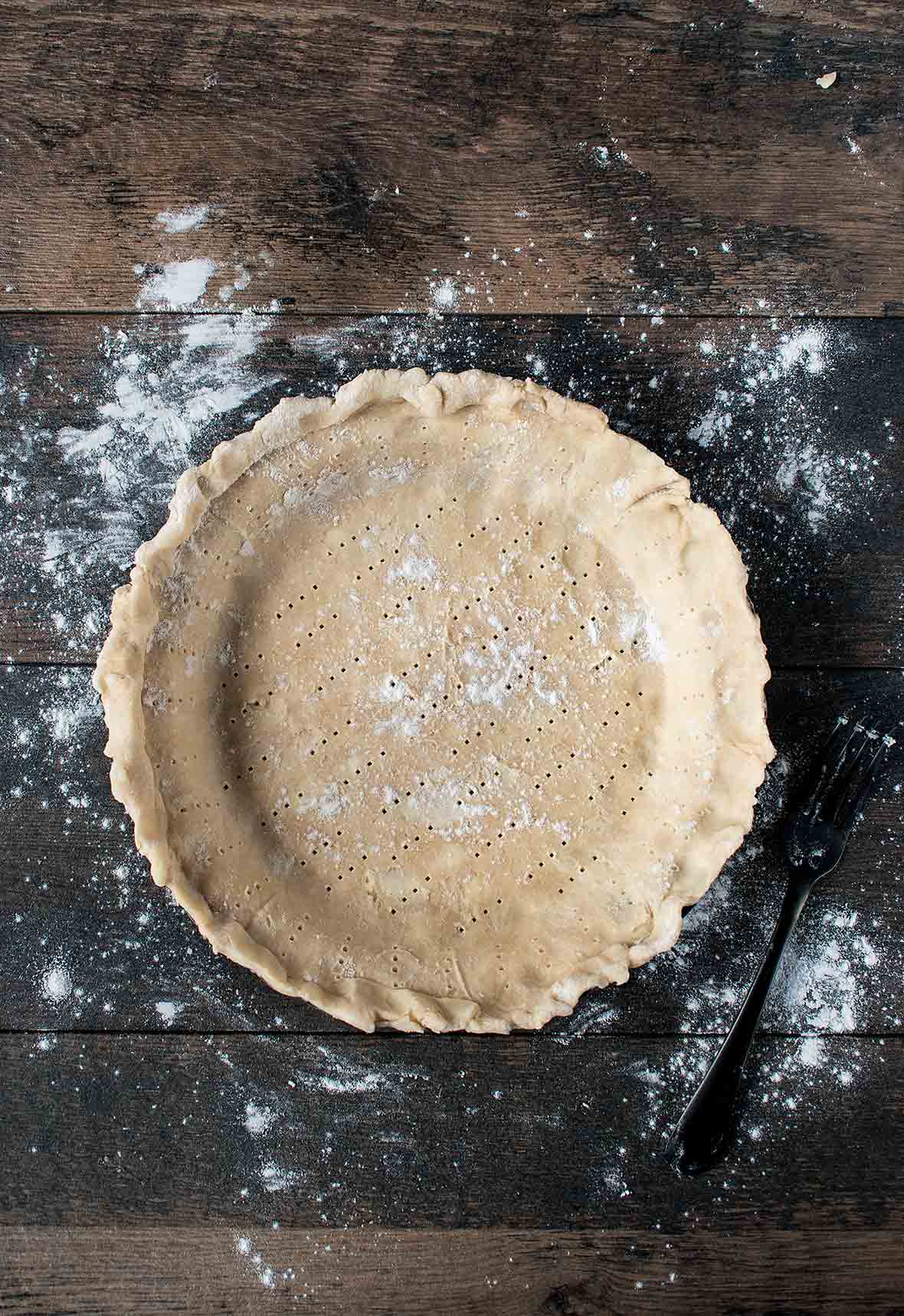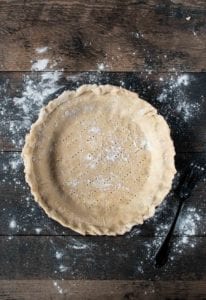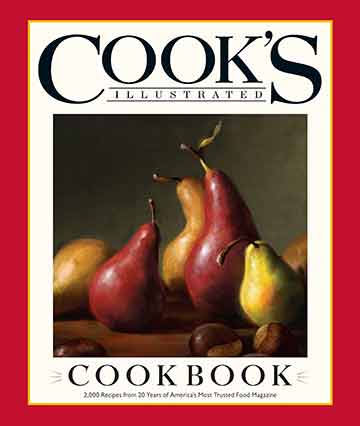

Lard and Butter Pie Crust
Ingredients
- 2 1/2 cups all-purpose flour, stashed in the freezer until cold
- 1 teaspoon salt
- 2 tablespoons granulated sugar
- 13 tablespoons (6 1/2 oz) cold unsalted butter, cut into 1/2-inch (12-mm) cubes
- 8 tablespoons (4 oz) cold lard, cut into 1/2-inch (12-mm) cubes
- 4 to 6 tablespoons ice water
Instructions
- In a food processor fitted with metal blade, combine the flour, salt, and sugar.
- Toss in the butter cubes and process with five 1-second pulses.
- Toss the cold lard into the processor and continue pulsing until the butter is no larger than the size of peas and the flour is pale yellow and resembles coarse cornmeal, about four 1-second pulses. Dump the flour mixture into a medium bowl.
- Sprinkle 3 tablespoons of ice water over the flour mixture. Working quickly, use a fork to fluff and mix thoroughly. Squeeze a handful of dough—if it doesn’t stick together, add the remaining water, 1 tablespoon at a time.
- Handling the dough as little as possible, divide it into 2 balls, one slightly larger than the other. Flatten each portion of dough into 6-inch discs. Wrap in plastic wrap and refrigerate for 30 minutes.
- On a lightly floured work surface, roll each portion of dough to slightly larger than your pie plate. Carefully drape the slightly smaller portion of dough in the plate. If desired, prick the bottom crust with the tines of a fork, if desired.
- Fill with your favorite pie filling recipe, top with the remaining portion of dough and crimp the edges. Trim any excess dough that hangs over the edge. Freeze the unbaked pie for up to several weeks or transfer it to the fridge for at least 30 minutes before baking according to your recipe. Originally published January 9, 2002.

Nutrition
Nutrition information is automatically calculated, so should only be used as an approximation.
Recipe Testers’ Reviews
This was one of the best pie crusts I’ve ever tasted. It was also one of the easiest to make. With this recipe in your arsenal, you’ll always get great compliments on your pies.











Hi I am BRAND NEW to baking pies. I am allergic to soy so I can’t have Cristco or anything. I used snow lard from the store, being so new…it could be a mess. I followed the directions to a T for the first batch, but I think my second batch the butter was an issue and my lard sat out for a minute while I prepared the second batch. So, the first ones came together great but the second ones were hard to put together, kept crumbling, and just didn’t “feel” right. I put them in the fridge and I’m going to roll them out tomorrow. Can you help with this issue or tell me what I did wrong? I’m thinking it might be the too warm ingredients…
Kelley, I suspect that your instincts are correct. Working with cold ingredients is critical for making pie dough. Some bakers will even occasionally grab an ice cube and rub it between their hands to keep them cold for working with the dough. The overnight rest should have allowed your second batch of dough to fully hydrate and hopefully, it will be smooth sailing today.
I never make pie crusts but during the pandemic I am working on my baking skills. The crust turned out wonderfully but not very pretty but i was able to mash pieces where it tore to mend it. I made an apple pie and read a post that said to toss the apples with sugar and let the juice drain and then thicken it with cornstarch. I then added the apples and cooked them a bit. I now know that i should have let them cool first before adding to the crust but nevertheless it was all delicious. I used nothing but the food processor, no hands as I missed that direction but still very flaky!
I’m so glad to hear it, Liz! I’m also pie crust challenged, but I’ve been working on it and it gets easier every time. So delighted it was a success for you. Can’t wait to hear what you try next!
Is it normal not to use water? My dough seems wet with just the butter n lard.
When prebake, the lard melts and alot dripping on to the oven, is it normal?
Hi Daisy, I’d just like to clarify your question. This recipe actually does call for ice water to be added. Are you perhaps saying your usual recipe doesn’t call for water and this one does? Every pie crust I think I’ve ever made, starting with my grandma in her kitchen when I was about 6 years old, does add a little water, with the exact amount varying depending on the recipe and the feel of your dough. It can be a little tricky to add the exact right amount, but that comes with practice. As for the lard melting, that to me indicates perhaps the lard wasn’t cold enough before you worked it into the dough or maybe the dough sat at room temperature before you slid it in the oven? Not trying to point fingers, just trying to ask questions so I can discern what went awry. If you’d prefer, you can email me and we can chat on the phone quick to figure it out. You’ll find me at david@leitesculinaria.com.